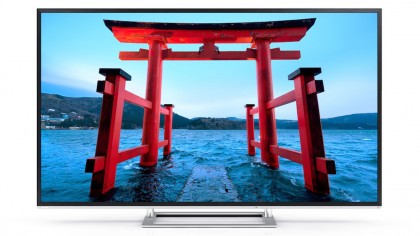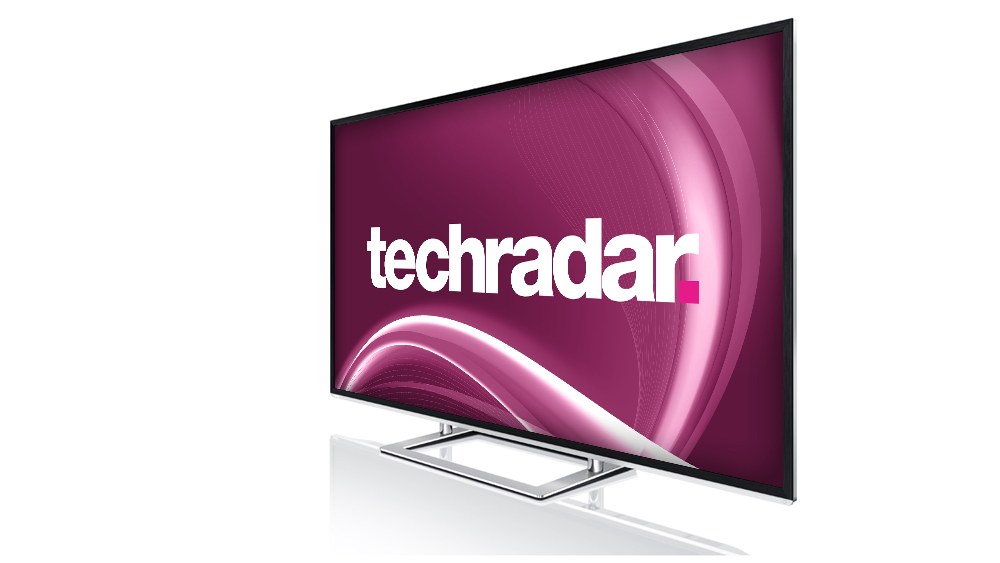Why you can trust TechRadar
I've got a mixed bag to report in this section sadly. Let's kick things off positively, though, with the main good news about the 84L9363's picture quality: its native 4K playback.

Fed the full gamut of native 4K sources we can currently lay our hands on (which is essentially a series of lengthy demo reels from Sony, Samsung, LG and, of course, Toshiba itself) the 84L9363 consistently delivers on the key thrills I chiefly associate with native 4K. Obviously this includes the extra sense of texture and detail you'd expect from including four times as many pixels in the picture as you get with normal full HD images – and the sheer enormity of the 84-inch screen does no harm to the impact of all those extra pixels.
Also key to my love of 4K is the extra depth you get with 'large scale' images like views across cities or landscapes. Having more pixels to play with enables the screen to resolve smaller details right in to the distance, meaning you don't get into that 'flattening off' sensation as quickly as you do with HD. Again the impact of these endless vistas is particularly spectacular on a screen as big as this.
Colour
Colours, too, benefit from the 4K difference, as the 84L9363 comfortably illustrates the way colour blends look more subtle, refined and just more realistic thanks to the way the extra pixels can portray more minute tonal shifts.
It must be said that the 84L9363's colour handling isn't quite as stellar as that of Toshiba's 65L9363, which appears to use a particularly high-quality source panel. But it's still a cut above your typical HD colour performance, and again the benefits are underlined by the sheer vastness of the screen they're appearing on.
One of the biggest surprises during my testing with native 4K sources is the effect of the Resolution+ processing. For this really does add another level of sharpness to even a native 4K presentation. And surprisingly it does this without making pictures look too gritty or 'stressed'. We could readily imagine many users preferring to leave this feature on with their native 4K sources – even though purists will doubtless opt to avoid it like the plague.
Motion
When you're talking about sharpness and detail at the level made possible by native 4K content, the sort of motion blur caused by LCD technology's relatively slow response time can become a serious irritation. But the 84L9363 does OK in this department, suffering only a little with resolution loss over moving objects even if you opt not to use the TV's motion processing tools.
Sign up for breaking news, reviews, opinion, top tech deals, and more.
Actually, we'd advise that you don't use the motion processing (at least with 2D material) even if you quite like the smidge of extra motion clarity and fluidity it delivers. During my tests I found that the motion processing tended to greatly increase the chances of the set suffering from lip-synch issues, where soundtracks distractingly slip out of time with the video stream.
Having slipped almost accidentally into negative territory, I might as well tuck into the other problems I have with the 84L9363 that take the edge off its potential budget 4k appeal.
Contrast
The biggest problem by far is that the 84L9363 is lumbered with a pretty uninspiring contrast performance. Deactivate the set's automatic backlight controls and dark scenes look distinctly grey where they're supposed to be looking black – a fact which makes them look unconvincing and also tends to lead to some of the subtle detail in the darkest corners getting greyed out of the picture. This sense of missed detail is, of course, particularly painful in a 4K environment.
So why not just turn on the auto backlight controls then, we hear you cry. Because while doing this does indeed produce a dramatically deeper and more credible black colour from the 84L9363 – so long as you use the most powerful Adaptive Backlight setting – it comes with significant problems of its own.
The thing is, as it goes about its automated light control business it tends to create some pretty distracting fluctuations in the picture's illumination, on both macro (whole picture) and micro (in localised areas) levels. Particularly hard to ignore are the fairly frequent occasions where you can make out clear bands of extra illumination spilling right across dark shots to illuminate any bright elements there might be towards the centre of the image.
Distracting enough at any time, this light blocking issue kicks into overdrive when you're watching a wide-ratio film requiring the appearance of black bars above and below the picture.
Another (much less disturbing) issue with the 84L9363 is its upscaling. For while the set actually does a surprisingly good job for its money of making sure upscaled pictures don't look excessively noisy, it doesn't manage to also present upscaled content with quite as much crispness and apparent extra detail as the stars of the 4K upscaling world (mostly the Samsung F9000 and Sony X9005 series).

John has been writing about home entertainment technology for more than two decades - an especially impressive feat considering he still claims to only be 35 years old (yeah, right). In that time he’s reviewed hundreds if not thousands of TVs, projectors and speakers, and spent frankly far too long sitting by himself in a dark room.
